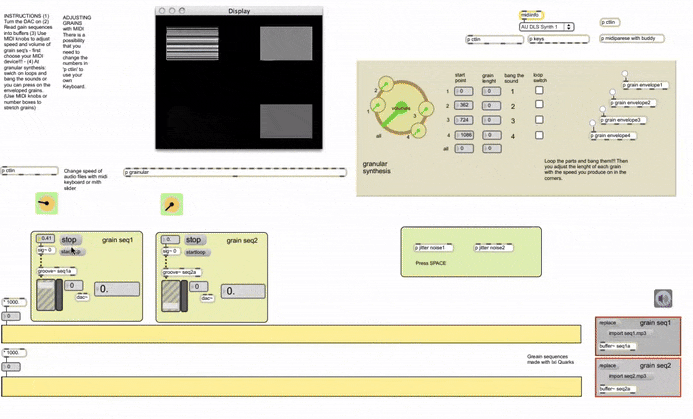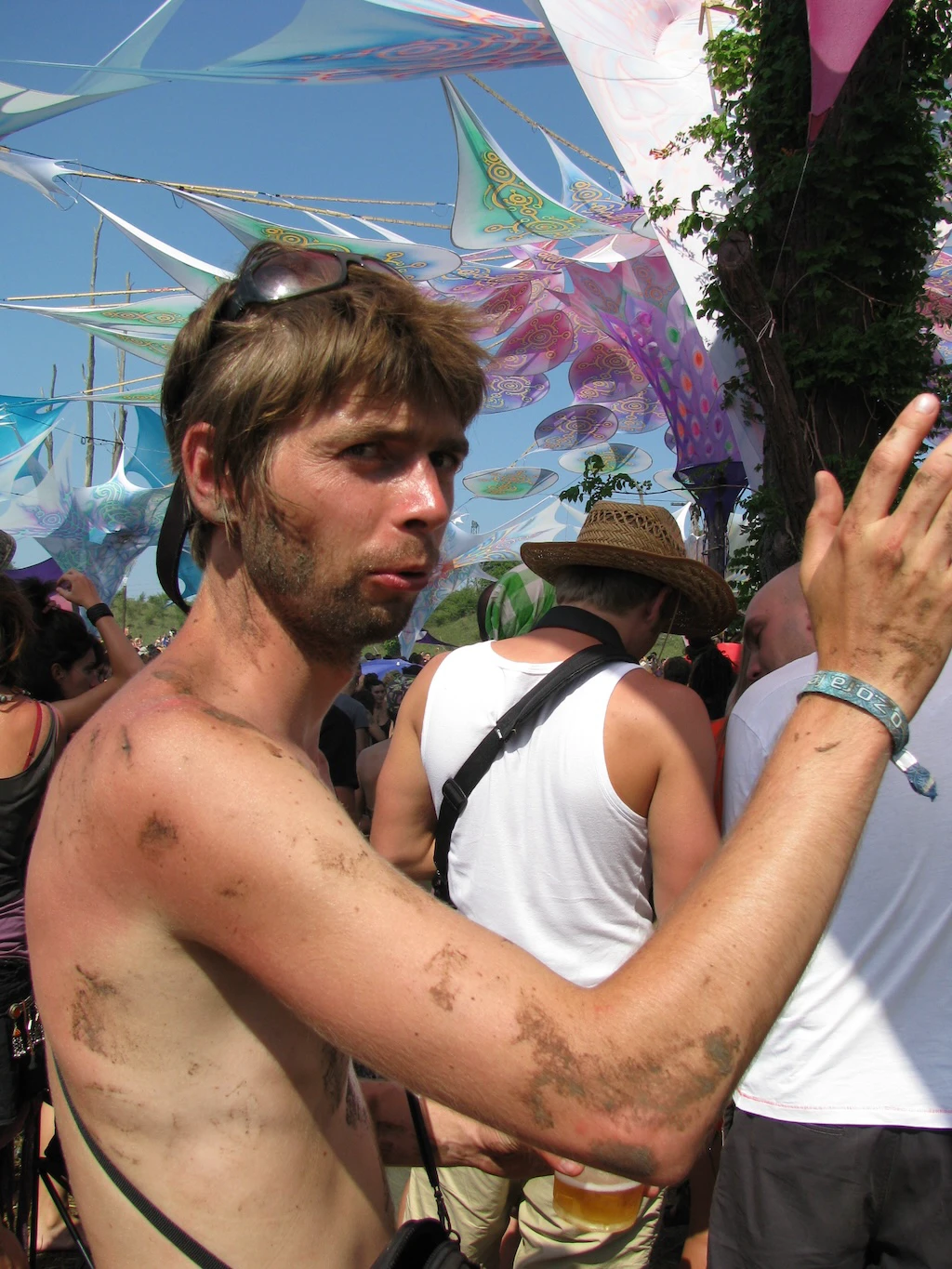BARN Interview: My Journey into Biofeedback Art
This interview was published on biofeedbackartresearch.net and then republished on Medium. Feel free to read and clap there!
Artistic vs. Scientific Orientation
How do you balance the artistic and scientific elements in your work? Do you feel more comfortable with one than the other?
OK… maybe let’s look at what I think about the relationship between art and science for a bit. For me, they are like the two ends of a spectrum. Like yin and yang. They can’t seem to live without each other. I have certainly been more comfortable with the artistic side because it feels as though I can always say, “I don’t really know why I am doing what I am doing. There is simply this inner calling that I want to answer.” But eventually I realized that I needed the attention of “serious” people — for instance, those who could offer me a scholarship, funding, or a job — and so had to learn to organize thoughts, words, goals, etc. I guess I had to become more scientific, more logical, which can really be exciting and eventually somewhat addictive. For instance, becoming better at a programming language made me feel that I might be able to control everything, even how random I want something to sound or look.

Initial Motivation for Biofeedback Art
When did you start exploring the intersection of biological data and artistic expression? What sparked your interest in this field?
In 2007, I was in my second year of my music tech course and one of our teachers, Richard Hoadley, introduced us to using the Arduino board as an interface between the real and digital worlds. We connected light-dependent resistors, ultrasonic and infrared sensors to the board, sent their readings to SuperCollider and Max/MSP and controlled sounds and visuals with them. It was AWESOME! What I really liked in Richard was that he understood that the best way for us to learn was to link our personal interests to the assignments, to work on something we cared about. I wanted to learn to control my mind… I guess to become enlightened. So I bought my first EEG, the two-channel IBVA (Interactive Brainwave Visual Analyser) from Luciana Hail and started hooking up my brainwaves to sounds and physical installations. I even got into the Cambridge News, which made my grandmother very proud.

But, like many initial neurofeedback art projects – as I later discovered – mine didn’t have a very clear… let’s say scientific signal processing methodology. In other words, I didn’t really understand what was happening under the hood. I think it was being uncomfortable with this lack of understanding why I kept familiarizing myself with computer– and neuro–science and eventually did a PhD titled Developing Brain-Computer Music Interfaces for Meditation.
Impact and Aspirations
Where would you like to see the greatest impact of your work? What specific outcomes or changes are you hoping to achieve through your projects in academia, industry or public?
So, I wanted to use neurofeedback to become better at controlling my mind. This was mainly to learn how to deal with stress but also to induce an altered state of consciousness similar to those accessed with psychedelics. When my friends and I were young in Hungary, we tried cannabis, LSD and magic mushrooms mainly for fun but also to ease uncomfortable family situations in some cases. Drugs were simply part of the subculture I grew up in. You can’t choose where you are born, can you?
The first acid trip really changed something in me and even just writing about it now makes me feel emotional. The trip gave me a mental perspective where I could somehow feel that everything might be much more connected than most people think during their normal, everyday lives. But soon, these substances became uncomfortable and stressful and I got to know about people who can achieve these heightened states without psychedelics. They meditate instead of using drugs!
And so I tried meditation. Sometimes it was powerful but most of the time difficult, which is why I thought neurofeedback, more specifically neuromeditation, could help me streamline the practice. It did, but after around a decade of experiments, I now think that biofeedback is a good tool to get to know ourselves with, but it is not necessary to keep using once we know how to induce and maintain the states we are looking for. (The same has been said about psychedelics.) These biofeedback tools I think should be disposable… or more specifically recyclable. You should give the machine to your friend once you don’t need it anymore.
While my journey has led me toward substance-free methods for altering states, I fully respect the paths of those who find value in psychedelics.

Oh, the impact I am seeking? I would like to share my experience with more people and help them streamline their sensemaking practices through bio-guided meditation. In my next research project – providing I get funding for it – the bio-guided meditation should be informed by the arts as both the input and the output. As input, where we use music, sound, visuals to induce and maintain the desired altered state – which can be anything between a simply more relaxed and a more deeply altered visionary state – and as output, where the arts are used as mediators, interfaces… communication protocols for integrating insights accessed in the altered states into our lives for instance with poetry, painting, music, film or even theatre plays. Whatever participants feel most connected to.
Here’s a snippet from my research funding application draft:
The work aims to empower participants by enhancing their self-awareness through insights gained from altered states of consciousness (ASC), expressed artistically. Through a feedback loop where self-awareness amplifies artistic expression reciprocally, members will collaborate on developing personalized visual and auditory entrainment methods to induce and maintain ASC. We will use brain-computer interfaces to record data on the neural correlates of entrainment and ASC for real-time biofeedback and offline analysis. By recognizing our agency in addressing personal challenges, we can create a ripple effect of positive change, ultimately contributing to societal well-being through individual growth.
In short, the impact I am seeking is to help people (myself included) become more self-aware with biofeedback art. I’d like to publish more papers, get more funding, and establish a research institute for biofeedback meditation where we can impact academia and industry and then make these inventions (hardware, software, and how to use them effectively) more accessible to the public.
Challenges & Growth
What have been some of the main challenges you’ve faced in your work in general or specifically with biofeedback art? How have these challenges shaped your principles, approach and methods? How have your goals changed since beginning your work?
My main challenge was not being able to communicate properly in English after moving to the UK from Hungary in 2005. First, I thought this was fine because I only wanted to stay for a bit. But then I started studying while working, and while in my first year I didn’t really have to write much, there were still presentations every now and then. I was a mature student and embarrassed by how bad my English was. Even after 20 years and a PhD, I am still nervous when I have to give a presentation. But, I guess I would be if I had to do it in Hungarian too… so maybe I just need more meditation and less caffeine! Ha-ha!
In regard to biofeedback art, my main challenges were linked to doing a PhD in a department where no one had experience with brain-computer interfacing. This meant people couldn’t help with constantly emerging technical issues. There were other challenges; for instance, while working on my research, my son was born a year after I started my PhD, and we entered the COVID years before I submitted. After the VIVA, I had to do major revisions. I felt super stressed, disappointed even angry. But as I worked through the revision process, it dawned on me that what I submitted simply wasn’t good enough, and my externals were truly trying to help. We need to learn not to take things too personally. It’s a hard lesson but absolutely necessary.
Looking back, it feels like my PhD journey was a nightmare and am sure I am not the only one who says that! But there is also a positive side to my story: I understood that family and health are priorities (not work) and that developing relationships with the right people is super important. The right people can streamline your progress. Keep networking and don’t have too much coffee. Before submitting my major revisions, I had double double espressos. That’s four shots on an empty stomach in the morning. cRAzy TiMeS!
Tools & Methods
Could you share information about specific hardware or software tools or methods that are integral to your work?
The last EEGs I used were the NeuroSky Mindwave and the OpenBCI Cyton with a Greentek cap. I tried to use only one software for all the signal processing steps from acquiring the EEG signals in the computer up to controlling the parameters, the sounds mapped to the classified brainwaves. If possible, I’d like to continue working this way. I don’t like receiving data in one software, processing it there, and then sending it to another software for mapping, for instance, via Open Sound Control (OSC). But one needs to be flexible, so let’s see what the future brings. Also, I’d like to continue using both research- and consumer-grade EEGs in a way where the signal processing of the latter can be validated by the former.
Collaborations
Overall, how has collaboration influenced your projects? Specifically, what insights did you gain when working with experts from other domains, such as collaborating with scientists if you’re primarily an artist?
My main collaboration regarding biofeedback art was with Fredrik Olofsson, whom I approached to become my PhD advisor after encountering delays in developing the signal acquisition protocols in SuperCollider. Fredrik is not only a skilled hacker and sound artist but also widely regarded within the SuperCollider community as an exceptionally positive and supportive individual. We are still in touch, and I hope to work with him again. But, I worked with many people, and the main thing I learned is this: Be kind and respectful, and do as much research or troubleshooting as possible before asking for help. Also, just because someone is higher up the academic ladder, that doesn’t mean they know everything about a research domain. Often they don’t, and perhaps that’s where you have an opportunity to show your personal skill: don’t be afraid or arrogant. Probably something in-between works best.
Future
Where do you see the field of biofeedback art research in the future?
I hope for more collaborations, more support, and more funding, which would allow more engagement with the public. We need good, reliable, consumer-grade devices that can be taken to public events to show people that practicing meditation can yield more agency in our lives. There is simply too much pain in this world and by having more people making more meaningful, ethical… sustainable choices, we could first ease our own pain and then help others do the same.
Final Thoughts
Do you have any closing thoughts or messages for the BARN community and newcomers? Perhaps a personal story or anecdote related to your work that you’d like to share?
I think I added enough personal touches above. I hope that you enjoyed reading about who I was, am, and want to be. Please see my last biofeedback performance video embedded below and the relevant chapter in my thesis on this subdomain. I look forward to reading about you, and let me know if you have any questions. For instance, is there anything I can help you with?
Bye for now!
k